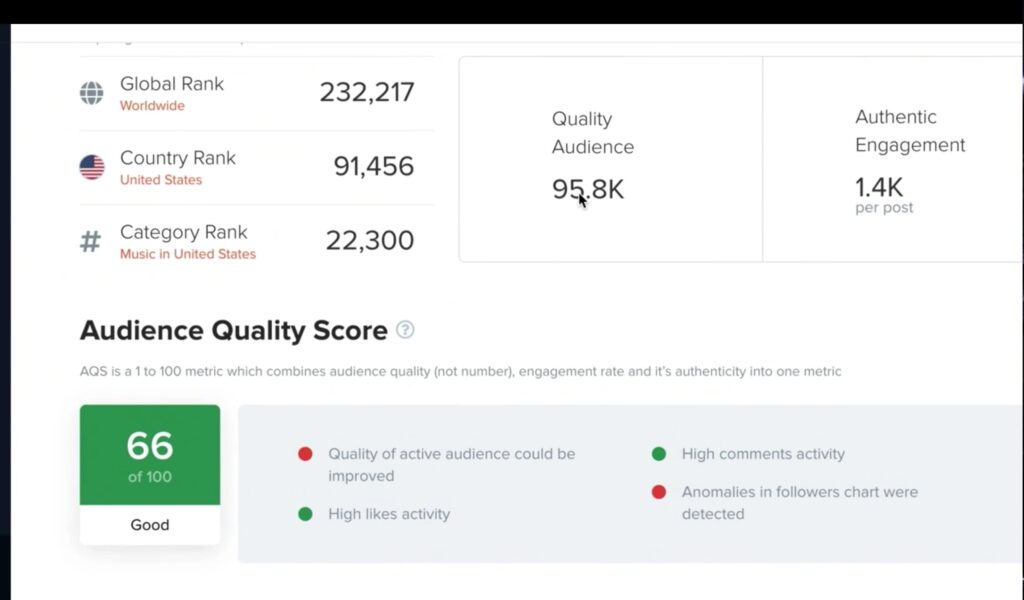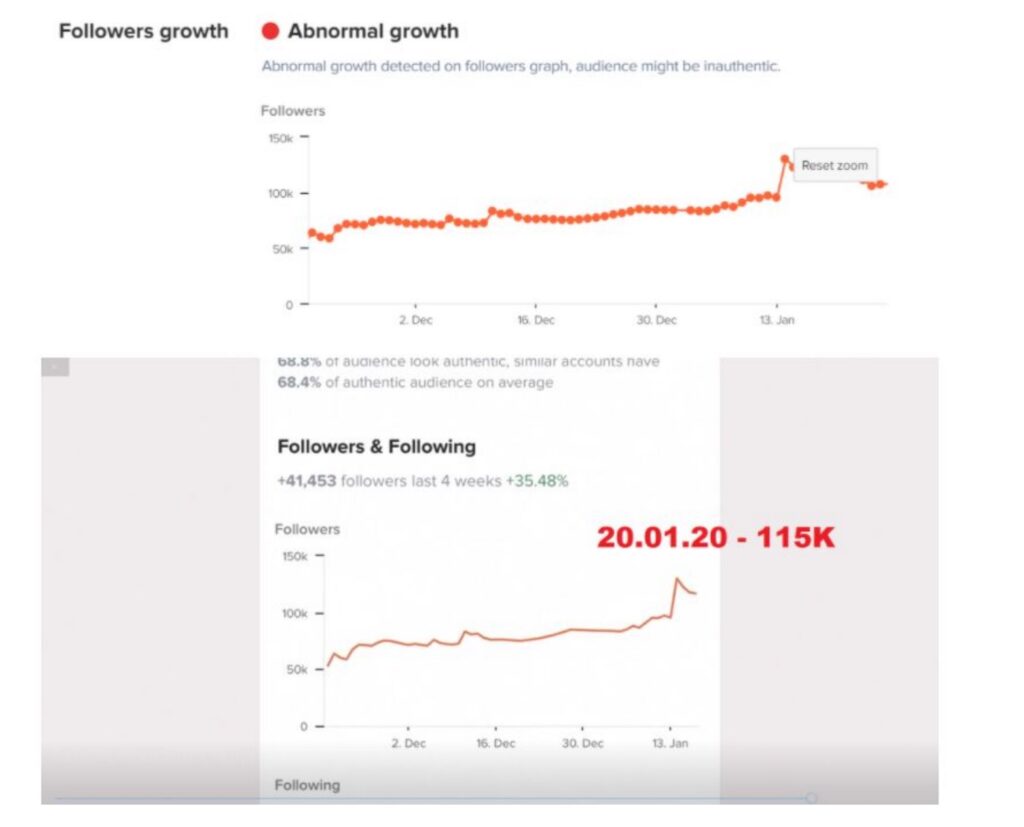Influencer marketing analytics company HypeAuditor contacted me Friday night to offer a response to Fake Famous director Nick Bilton’s use of its software in the documentary. Bilton runs his fake follower-driven influencer Dominique Druckman through an unnamed software—clearly HypeAuditor to anyone who knows the interface—and makes fun of her 66 (out of 100) score, implying it’s not good at detecting her largely bot-farm following.
The company’s response actually uses the very data shown in the film to illustrate that not only did the tool accurately flag Druckman’s account as suspect, but the movie either intentionally or ignorantly misled viewers.
A PDF document from the HypeAuditor marketing team begins, “We are deeply concerned about this situation and regret that a journalist didn’t contact us to verify the information or ask for advice on how to read the reports correctly.” What followed was a series of counter points and screen captures from HypeAuditor which make Bilton’s passive use of the platform in the film quite inflammatory.
The screen capture from the film that shows the moment in question is here, captured by me. (You can even see my mouse hovering over the quality audience number.) It falls at the 1:16:12 point of the film.

Bilton’s narration over the frame is as follows:
“Not only did the software report that she had almost 100,000 real and engaged followers, but it also said that she ranked in the top 0.1 percent of the most famous people on the planet.”
Nick Bilton, Fake Famous
HypeAuditor’s response pointed out that Bilton failed to point out the warning messages, indicated by the red buttons. They question the quality of the active audience and anomalies in the followers chart were detected. The two green buttons only indicate high likes and comments, which Bilton wouldn’t argue, because he allegedly paid for them.
More damning than that, however, was the subsequent chart the film showed charting followers growth. Bilton used the mobile screen shot rather than the desktop version. The comparison is below, provided by HypeAuditor:

Notice the big difference? The desktop version says, very plainly, “Abnormal growth detected on followers graph, audience might be inauthentic.”
So the conclusion is the very data that Bilton used in his film to prove HypeAuditor couldn’t detect his astroturfing of Druckman’s audience, actually proved it could.
The Mea Culpa (or lack thereof)
HypeAuditor did recognize the 66 out of 100 score, complete with a green label to indicate the influencer was “good,” needed further exploration. They wrote:
“Our data analysts are now studying the subscribers of this account in more detail to understand the reason for the average AQS.”
HypeAuditor’s response to Fake Famous
Certainly, this response and revelation doesn’t mean all efficacy measures of all tools are suddenly trustworthy, though I contend their trustworthiness was not in question. The algorithms and data analysis are starting points, not definitive decisions. As I pointed out to Bilton in our podcast discussion about the film, a different tool showed me that only 18% of Druckman’s followers were detected as fake, but her audience was also heavily populated by accounts from Iran. This illustrates when you look into the results a little deeper, you can see more than their algorithms might detect.
Doesn’t say much for the algorithms, but underlines the point: Human curiosity and analysis is needed on top of them.
To date, I’ve run Druckman’s current Instagram account through five tools. Ironically, HypeAuditor is one of the more accurate ones, sans the 66-green visualization. The warning signs and suspicion surfaced should be a red flag to any knowledgeable influence marketing professional deciding whether her account is worth exploring. Only one tool I’ve used had a grossly low number. I’ve let their product team know so they can test and improve.
It’s also fair to note that Bilton ran his scan for the movie when Druckman had 115,000 followers, yet inferred in the film and our discussion that the result applied to the 250,000 he purchased. While paid followers are paid followers, I’m curious how many he actually purchased versus how many organic followers emerged in that count because real people who see an influencer with 100,000 or more followers often join the crowd and follow, too.
So HypeAuditor is using the new data to challenge its data analysts which I’m guessing will improve the tool. Bilton isn’t likely to recognize any flaws in his use of the platform in his film or fix the slanted view of influencers he’s left us with. So mea culpas in this thing are likely to stay one-sided.
And then there’s the sweetest irony of this whole thing: One Hollywood talent manager confirmed this week that several of his clients routinely do campaigns to support one client in particular: HBO—the network that currently airs Fake Famous by Nick Bilton.
Editor’s Note: Cover shot for article adapted from an image by Kari Shea on Unsplash

